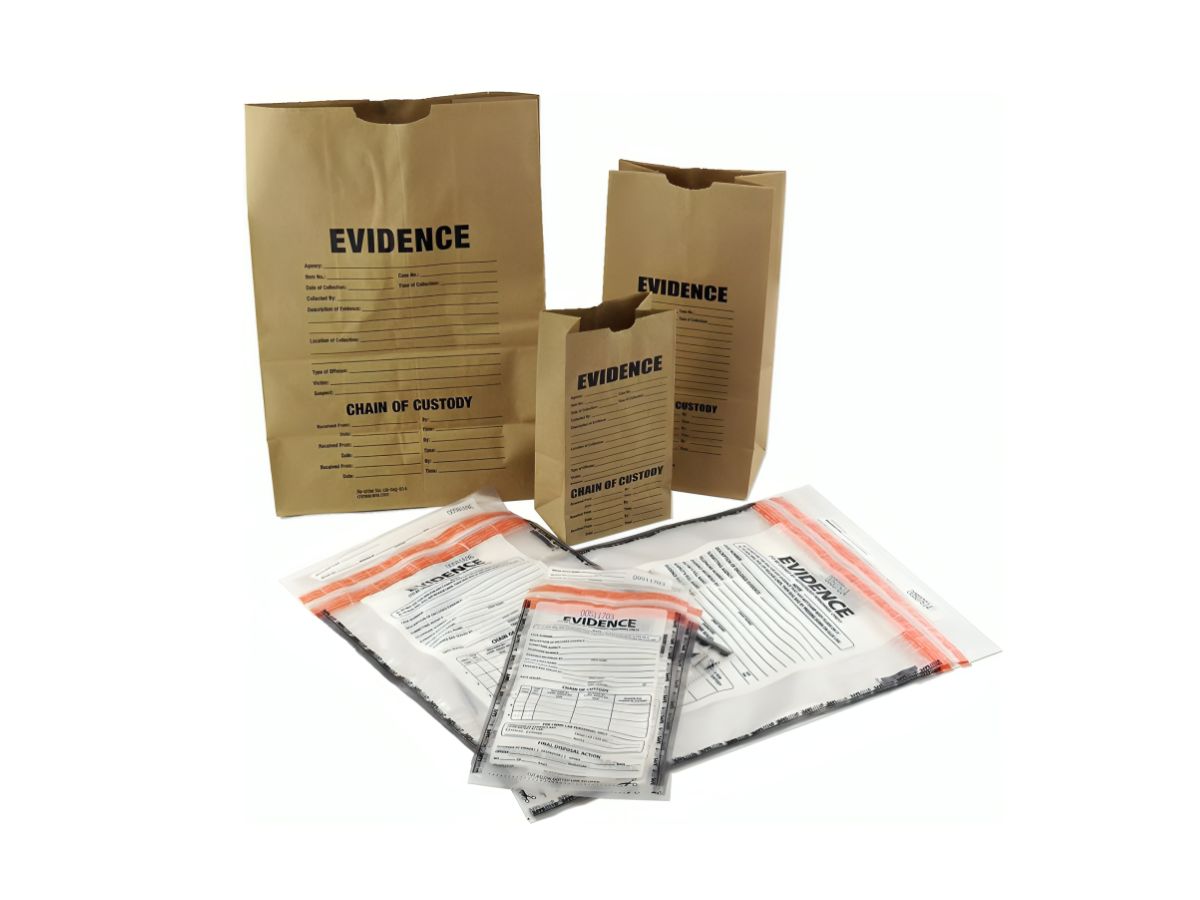
How to Properly Handle and Store Evidence Bags

Properly handling and storing evidence bags can make the difference between a successful legal case and a compromised one.
At the heart of this critical process are evidence bags, the unsung heroes of the justice system. Properly handling and storing evidence bags is not just a matter of procedure; it is the foundation upon which the pursuit of truth and fairness is built.
This blog will explore the significance of correct evidence bag management. We will discuss the ways of preserving the integrity of collected evidence. Also, we will delve into the key steps and best practices that ensure a foolproof chain of custody.
Handling Evidence Bags Properly
A. Chain of Custody Maintenance: Legal Requirements
Maintaining a clear chain of custody is fundamental to preserving the admissibility of evidence in court. It involves documenting each step of evidence handling, from collection to storage. Proper documentation includes recording the names and signatures of individuals involved. It also includes dates and times of each transfer or handling.
Moreover, compliance with legal requirements concerning evidence handling is imperative. These requirements can vary by jurisdiction, but they often include specific protocols for evidence management and storage. Failing to adhere to these legal guidelines can result in evidence being excluded from court proceedings, potentially jeopardizing a case.
B. Preventing Contamination: Types of Contamination Risks
Contamination poses a significant risk to the integrity of evidence. There are various types of contamination, including physical, biological, and chemical contaminants. Understanding and mitigating these risks is essential in evidence handling.
Physical contamination can occur when evidence comes into contact with foreign substances. To prevent this, law enforcement personnel should use personal protective equipment when handling evidence. It includes gloves or masks. Additionally, evidence should be stored in a way that minimizes the risk of physical damage.
Biological contamination is a concern when dealing with evidence. It may contain bodily fluids or other biological materials. Proper handling, storage, and transportation procedures are crucial to prevent contamination.
Chemical contamination can occur if evidence is exposed to chemicals. It could alter its composition or integrity. It’s essential to store evidence away from potential sources of chemical contamination.
C. Documenting Evidence: The Role of Documentation in Accountability
Documentation plays a vital role in maintaining accountability throughout the evidence-handling process. Properly labeled and detailed documentation provides a clear record of who handled the evidence, when they did so, and why.
In addition to recording basic information, detailed descriptions of the evidence itself are crucial. This includes information about the item’s appearance, condition, and any identifying marks or characteristics. Such documentation is invaluable when presenting evidence in court. It helps establish a clear and unbroken chain of custody.
The careful record-keeping of evidence handling also serves as a safeguard against disputes or challenges to the evidence’s authenticity or integrity.
Best Practices for Storing Evidence Bags
A. Secure Evidence Storage: Dedicated Storage Areas
Dedicated storage areas for evidence are paramount to maintaining its integrity and security. These areas should be restricted to authorized personnel only, ensuring that evidence is not accessed or tampered with by unauthorized individuals. In addition to controlled access, secure storage units equipped with locks and keys add an extra layer of protection.
The organization of evidence within these storage areas is equally important. Proper labeling and categorization help personnel quickly locate specific items when needed, reducing the risk of mishandling or misplacement.
B. Environmental Considerations: Temperature and Humidity Control
Environmental factors can have a significant impact on the preservation of evidence. Therefore, maintaining proper temperature and humidity levels in storage areas is essential. Climate-controlled storage facilities help prevent evidence deterioration by keeping conditions stable.
Protection against direct sunlight is also crucial, as prolonged exposure can fade or damage items. Adequate ventilation helps prevent the buildup of moisture, which can be particularly damaging to paper-based evidence.
C. Maintaining Evidence Bag Integrity Over Time: Regular Inspection and Monitoring
While evidence bags are designed to protect their contents, they are not immune to wear and tear over time. Therefore, regular inspection and monitoring of evidence bags and their contents are essential to detect any issues and ensure the evidence remains intact.
Routine inspections involve checking for signs of damage, such as tears or moisture ingress. Any compromised bags should be replaced promptly to maintain the evidence’s integrity. Reassessment of storage conditions should also be conducted periodically to ensure that environmental factors remain within acceptable limits.
The Role of Evidence Security Bags
A. Understanding the Need for Security in Evidence Storage
Security is a cornerstone of evidence handling and storage. The preservation of evidence integrity throughout the chain of custody depends on robust security measures. Unauthorized access, tampering, or mishandling can have severe consequences for legal proceedings, making security an absolute priority.
Evidence security bags play a pivotal role in enhancing this security. They serve as the first line of defense against tampering or unauthorized access. By incorporating tamper-evident seals, these bags provide visible evidence of any interference, making it immediately apparent if the integrity of the evidence has been compromised.
B. Features of High-Quality Evidence Security Bags
High-quality evidence security bags are designed with features that maximize their effectiveness in safeguarding evidence. These features include:
- Tamper-evident seals that clearly show if the bag has been opened or tampered with.
- Tear-resistant materials that prevent unauthorized access through physical means.
- Serial numbers for tracking and accountability, allowing for easy monitoring of the bag’s movements. It ensures a comprehensive chain of custody record.
Conclusion
In conclusion, the proper handling and storage of evidence bags are not mere technicalities; they are the bedrock of a just and fair legal system. From the choice of the right bag type to meticulous documentation and secure storage, every step matters in preserving the integrity of collected evidence.
Connover Packaging stands ready to provide the tools necessary to maintain this integrity. Thus, helping you take the next step towards excellence in your work.
Share:
Get A Quick Quote
Social Media
Most Popular
Categories
Tags
Related Posts

Protecting Your Assets: How Payroll Deposit Bags Can Prevent Theft and Fraud
In the world of business, trust and security are paramount. As a business owner or manager, you work hard to ensure that your operations run

A Step-by-Step Guide on How to Organize Payroll with Payroll Bags
Managing payroll can be a daunting task for any business, big or small. Keeping track of employee wages, taxes, and other deductions requires meticulous organization

The Ultimate Guide to Organizing and Storing Soil Bags
If you’re a gardening enthusiast, you know how important it is to have good-quality soil for your plants to thrive. Soil bags, whether they be



